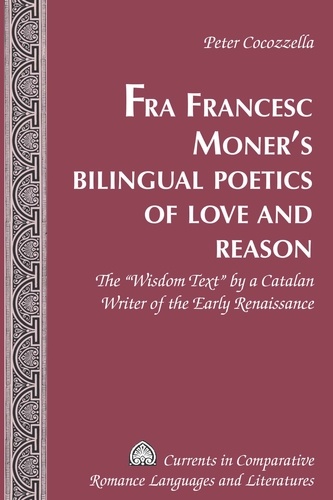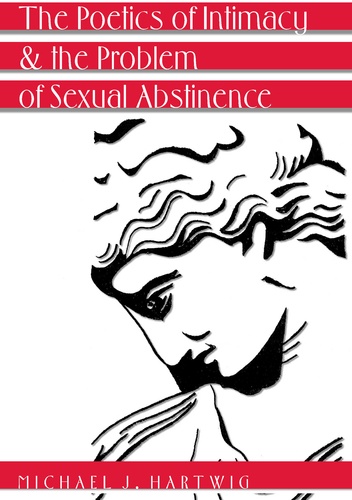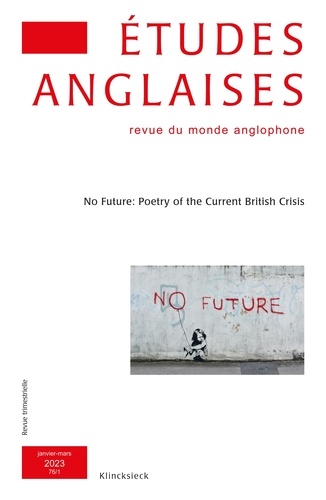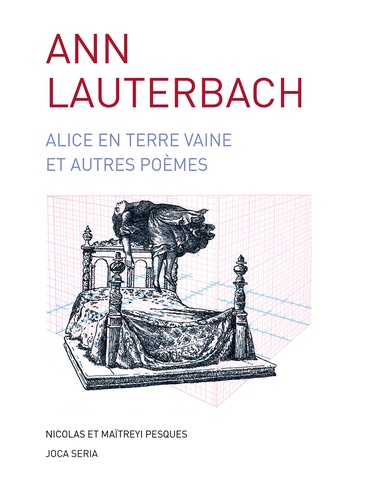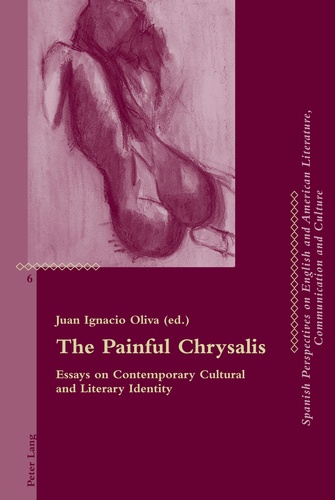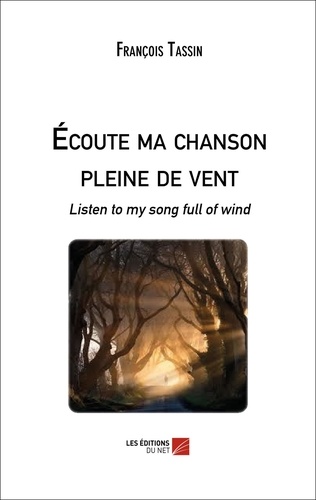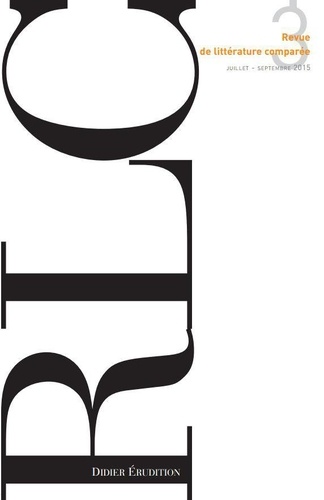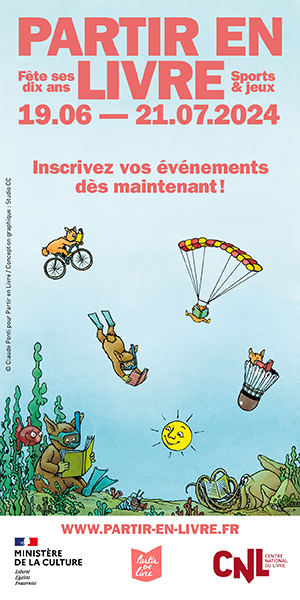Revue de littérature comparée N° 355, 3/2015
Salvatore COSTANZA, "Les oreilles ont dû vous tinter" . Fortune littéraire d'un thème folklorique de Lucien à Proust, RLC LXXXIX, n° 3, juillet-septembre 2015, p. 257-268. On examine ici la fortune littéraire d'un thème folklorique tel que le tintement des oreilles censé être un mouvement fatidique, d'où l'on pouvait tirer des pronostics sur l'avenir des individus. Il faut remarquer que ce motif est toujours employé chez les Grecs, Lucien, Aristhénète et dans la Recherche avec la même fonction. Au coeur d'une affaire amoureuse une femme en tant que médiatrice "révèle" à l'amant tourmenté par la jalousie que sa bien-aimée lui est toujours fidèle, qu'elle a sans cesse parlé de lui, donc les oreilles ont dû lui tinter. Il est intéressant de voir cet argument tiré de la superstition des tintements des oreilles, c'est-à-dire de l'otomancie, chez M. Proust, qui l'emploie toujours pour apaiser les troubles d'un amant abusé. C'est encore une fois le canevas déjà écrit par ses anciens prédécesseurs. Caroline BELOT GONDAUD, La Figure du couple machiavélique. A propos des "couples scélérats" de Shakespeare, Laclos, Barbey d'Aurevilly, Zola, Henry James, James M. Cain, Boileau-Narcejac, Ian McEwan et Ron Rash, RLC LXXXIX, n° 3, juillet-septembre 2015, p. 269-280. La figure du couple machiavélique est présente dans des oeuvres aussi diverses que Macbeth, Les Liaisons dangereuses, Les Diaboliques, The Portrait of A Lady et dans bon nombre de romans policiers. La façon dont la figure est mise en scène, mise en récit, crée une véritable dramaturgie du mal. Le couple machiavélique apparaît bien comme une figure de l'amour et du mal : dans sa version shakespearienne, elle est une réécriture du scénario biblique de la Chute et, dans sa version laclosienne, le marqueur d'une profonde dégradation de l'idéal courtois de l'amour. Mario ZANUCCHI, La Crise du symbolisme. La réception de Baudelaire et Verlaine dans la poésie de Walter Wenghöfer, RLC LXXXIX, n° 3, juillet-septembre 2015, p. 281-298. Le but de cet article est d'étudier la réception de Charles Baudelaire et de Paul Verlaine dans l'oeuvre d'un poète du cercle de Stefan George, qui jusqu'à maintenant a été ignoré par l'historiographie littéraire allemande : Walter Wenghöfer. L'étude de reception est étayée et précisée par l'analyse intertextuelle et intermédiale de poèmes exemplaires. De cette manière, la contribution reconstruit la crise de la poétique symboliste dans la poésie allemande de la "fin du siècle" . En outre, il montre comment Wenghöfer - à travers la dépotentialisation esthétique des figures d'autorité symbolistes - anticipe la critique que l'expressionnisme allemand adresse au symbolisme. Christine QUEFFELLEC, "La vie imite rarement l'Art" : Gemma Bovery, entre Flaubert et Wilde, RLC LXXXIX, n° 3, juillet-septembre 2015, p. 299-308. Gemma Bovery, roman graphique de Posy Simmonds se veut une parodie du roman de Flaubert, Madame Bovary, transposé à la fin du XXe siècle. Le narrateur, séduit par Emma Bovary dont il partage les aspirations romantiques, imagine que le destin de ses voisins, Charlie et Gemma Bovery, va se calquer sur celui des personnages flaubertiens et que la vie va imiter l'art, comme le souhaitait Oscar Wilde. Il s'apercevra qu'il s'est trompé. Ce roman invite à une réflexion sur la lecture et sur les rapports entre la littérature et la vie. L'adaptation cinématographique d'Anne Fontaine infléchit quelque peu le sens de l'oeuvre en conférant au film une unité de ton et de style que l'écrivaine avait voulu briser et en se rapprochant du roman français. Salvatore COSTANZA, "Les oreilles ont dû vous tinter" : the literary fortune of a folkloric theme, from Lucien to Proust, RLC LXXXIX (in French), no. 3, julysept. 2015, p. 257-268. We examine the survival of a folklore theme centered around the observation of buzzing in one's ears. Ringing was considered as a fateful movement and was comprised among the observations for divinatory ends. The relationship between the buzzing in one's ears and the belief that one subsequently became the object of other people's speech appears in Lucian of Samosata (second century A. D.) and in his later revival given by sixth century's epistolographer Aristaenetus. In this respect, a striking parallel is provided in modern French literature by Proust's Recherche. In every case a woman acting as mediator "reveals" someone that his beloved is always true to him and she was endless speaking of him. Consequently, something should have buzzed in his ears. It is interesting to remark, that such an argument drawn from superstition about buzzing in one's ears, that is, otomancy, still recurs in M. Proust with respect to abused lover's troubles. It is clearly the same plot, as his Greek antecedents have already used. Caroline BELOT GONDAUD, The Figure of the Machiavellian Couple, RLC LXXXIX (in French), no. 3, july-sept. 2015, p. 269-280. The figure of the machiavellian couple appears in Macbeth and Les Liaisons dangereuses, Les Diaboliques, The Portrait of A Lady as well as in various detective novels. The way it is told and staged creates a dramaturgy of evil. The Machiavellian couple can be interpreted as a mere figure of love and evil which rewrites, in its Shakespearean version, the biblical narrative of the Fall while the couple of Laclos signals the deep deterioration of the ideal of love in a courtly meaning. Mario ZANUCCHI, The crisis of Symbolism. The reception of Baudelaire and Verlaine in the poetry of Walter Wenghöfer, RLC LXXXIX (in French), no. 3, julysept. 2015, p. 281-298. The aim of this article is to study the reception of Charles Baudelaire and Paul Verlaine in the work of a poet from Stefan George's circle, who has been ignored by the German literary historiography until now : Walter Wenghöfer. The reception study is supported and clarified by the intertextual and intermedial analysis of exemplary poems. In this way, the contribution reconstructs the crisis of symbolist poetics in the German poetry of the < fin du siècle >. Furthermore it shows how through the aesthetic depotentialization of symbolist authorities Wenghofer anticipates expressionist criticism of the symbolist poetics. Christine QUEFFELLEC, "Life rarely imitates Art" : Gemma Bovery between Flaubert and Wilde, RLC LXXXIX (in French), no. 3, july-sept. 2015, p. 299-308. Gemma Bovery, Posy Simonds's graphic novel, is a parody of Flaubert's Madame Bovary, transposed into the end of the 20th century. The narrator, seduced by Emma Bovary, whose romantic aspirations he shares, imagines that his neighbours, Charlie and Gemma Bovery, will experience the same fate as Flaubert's characters and that life will imitate art, in accordance with Oscar Wilde's hopes. He will realize that he was wrong. This novel induces us to reflect on reading and the relationship between literature and life. The film adaptation by Anne Fontaine distorts somewhat the book's meaning, giving a unity of style and tone that the English writer had wanted to break down in order to draw closer to Flaubert's novel.
12/2015
